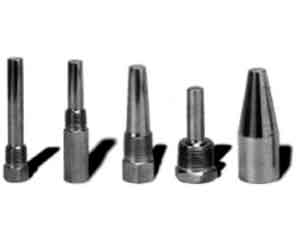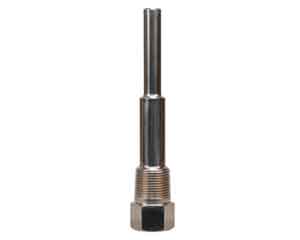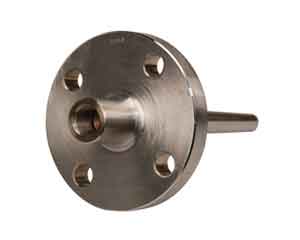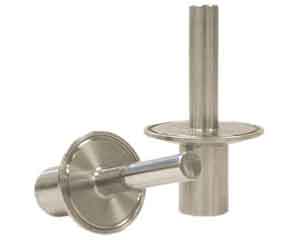 WARNING: Cancer and Reproductive Harm - www.P65Warnings.ca.gov
WARNING: Cancer and Reproductive Harm - www.P65Warnings.ca.gov
Trend and Wika Thermowells

Thermowells for temperature instruments are recommended for all process systems where pressure, velocity or viscous, abrasive and corrosive materials are present individually or in combination. A properly selected thermowell will protect the temperature instrument from possible damage thermowell permits removal of the temperature instrument forreplacement, repair or testing without effecting the process media or the system.
Thermowells come in a variety of styles depending on the use. The most common ones are the: threaded, flanges and sanitary. For high pressure and temperature there are also: Socket, Wels and Weld-in types.
Threaded Thermowells

Flanged

Sanitary

Standard Features
- Process Connections: Threaded, flanged, sanitary, socket, weld, weld-in
- Instrument Connection: ½" NPSM standard (National Pipe Standard Mechanical; A straight pipe thread for mechanical joints)
- Shank Configurations: Reduced, straight, tapered
- Bore Diameter: .260", .385"
- Materials: Brass, AISI 304, AISI 316
- Surface Finish: Brass: 60-100 Ra; AISI 304 & AISI 316: 60-100 Ra sanitary (AISI 304 & AISI 316): 16-20 Ra
Thermowell Terminology
- Process Connection:
- External means to connect thermowell to process piping system. Wells can be threaded, bolted (to matching flange), clamped or welded in place.
- Instrument Connection:
- Internal threads to connect temperature instrument to thermowell.
- "U" Dimension:
- Length of well inserted into the piping system. Measured from the base of the process connection to the end tip of well.
- "T" Dimension:
- Also called lagging extension. Extends length between the instrument and process connections to accommodate vessel or piping insulation. Standard length is 3" (2" for a well with a 2½" "U" dimension).
- "S" Dimension:
- Instrument insertion length into well.
- Bore Diameter:
- Dimension of internal bore to match the diameter of the instrument stem/bulb inserted into the well. The .260" and .385" bore sizes fit instrument stem/bulb diameters of ¼" and 3/8" respectively. Bore length equals "S" dimension.
- Root Diameter:
- Diameter of well shank below process connection. This dimension varies with process connection and/or shank design.
- Tip Diameter:
- Diameter of well shank at the end tip of well. This dimension may vary with process connection and/or shank design.
- Reduced Shank:
- Also called reduced tip. The shank O.D. is reduced over the last 2½" of the "U" dimension from the standard root diameter to a ½" O.D. The stepped shank is available with a .260" bore size only.
- Straight Shank:
- Shank O.D. is the same from the root diameter to the tip diameter. The straight shank is generally used with a .385" bore size but a .260" bore size is available.
- Tapered Shank:
- Shank O.D. is gradually reduced from the root diameter to the tip diameter. Available with a .260" or .385" bore size. The tapered shank is recommended for heavy duty applications characterized by high vibration, pressure, temperature and/or velocity.
